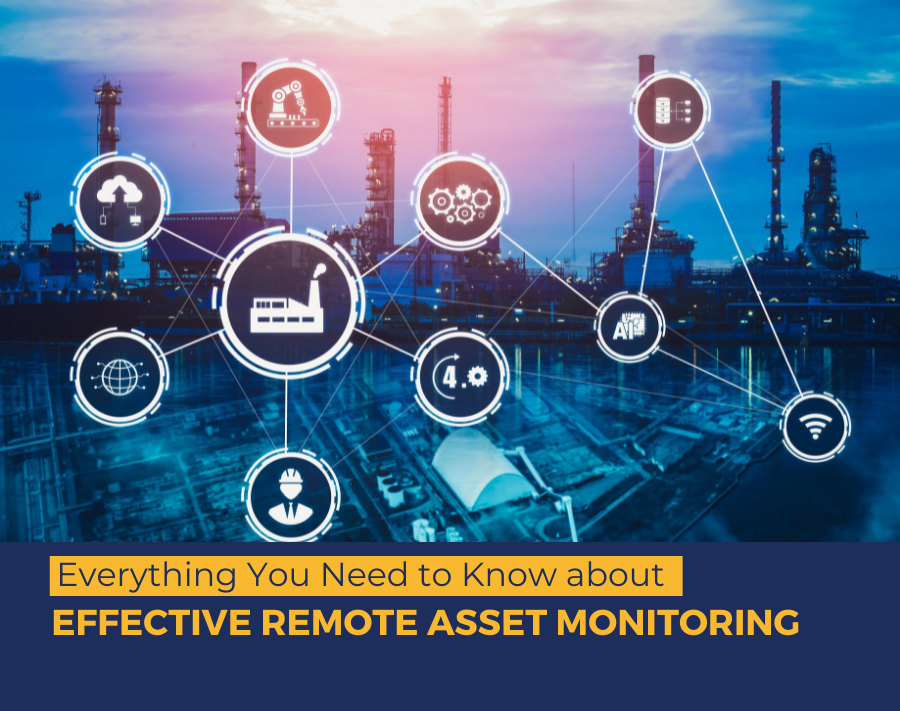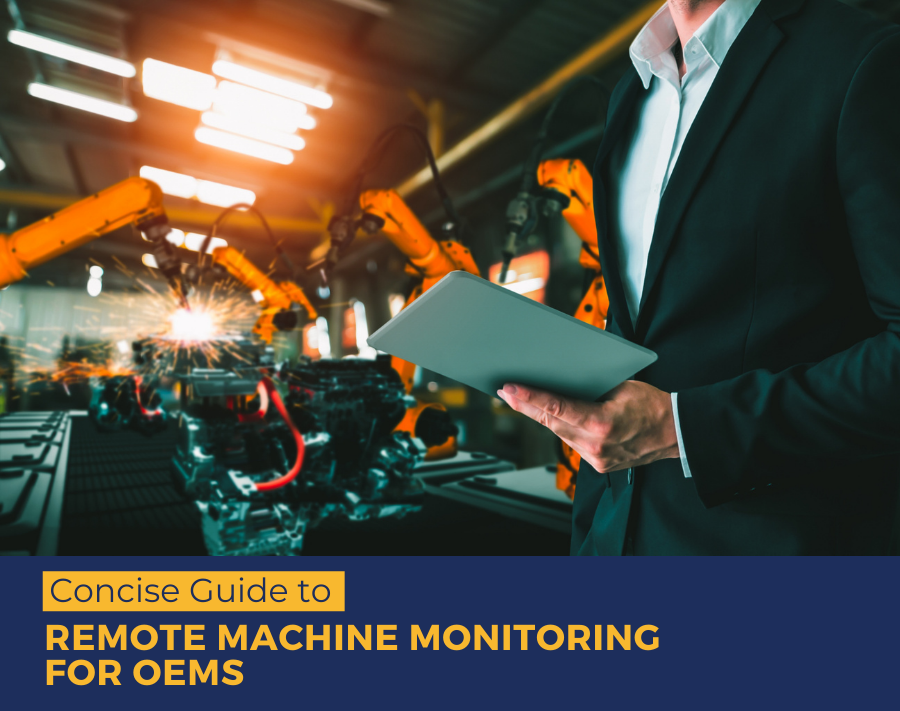We are in a world where iot remote asset monitoring of our assets has become the ‘new normal,’ and the abundance of data technologies is aiding in better decision-making and strategizing.
Industrial IoT has become the driving force behind enhanced machine monitoring and predictive maintenance of equipment. Remote monitoring and control was estimated to be $23 billion in 2020, and is expected to reach $31.7 billion in 2026, growing at a CAGR of 5.4% – thanks to the pandemic.
But is it enough to install high-tech sensors and software and expect it to show required results? Of course, not. Simply collecting infinite amounts of raw data from the sensors will not help our cause, and we should analyze the collected data from the monitored assets.
You might know what deliverables you are looking for in a remote monitoring system, but planning a strategy to implement a remote monitoring system effectively is not easy.
Steps to Effectively Implement Remote Monitoring System
1. The Main Objectives of Deployment of Industrial Internet of Things
The main objective of the project management system in IoT industry 4.0 is to make sure the plant downtime is reduced to the bare minimum. It is achieved primarily by restricting equipment failure. When deciding the project management strategy, you have to consider the overall costs of running the entire factory and the cost per hour of each part of the operation. For instance, you might have spent $1000 on a motor, but the price is not as significant as the value of the equipment in the manufacturing process.
SO, it is not enough to monitor various equipment and collect data without interpreting the data. While collecting data might be pretty tempting, managing and analyzing it is a challenging and expensive task.
One strategy to tackle this issue is by collecting large amounts of data initially, even if it’s at high costs. Once you’ve understood how the system works, you can cut down on the data collection to a bare minimum level to aid analysis.
2. Analysis of Remote Monitoring
Earlier, engineers and on-site technicians performed performance analysis. However, it is not always accurate and error-free. That’s the reason why remote monitoring helps in the predictive and proactive maintenance of the equipment. Suppose you are already conducting a performance analysis of your equipment. In that case, iot remote asset monitoring will give you a better chance at monitoring areas that weren’t covered earlier. Also That reorganizing resources effectively during peak production times.
Also Read : How to Ensure Digital Transformation Success for Your Enterprise
Remote monitoring doesn’t usually mean that you have to reorganize the entire operations or make sudden changes to data collection. If you have engineers and technicians already collecting crucial data manually. Also It will invested in predictive maintenance, then the information thus collected can be retrieved and analyzed remotely.
3. In-house or Third-party Monitoring System
There are two ways in which you can manage your remote monitoring efforts – in-house or third-party. If you choose an in-house solution, then the data collected from the sensors can be fed into a centralized system. Experts from anywhere in the world can further analyze it before sending it to the workers on-site in factual information.
Another solution is sending the collected data from the sensors to third-party suppliers and specialists in industry 4.0 technologies. A team of dedicated engineers and experts will monitor, analyze and diagnose the production problems. Usually, an OEM will also provide related services such as on-site support. Also The recovery support in addition to iot remote asset monitoring analyses. Most service providers offer scalable solutions to apply the service to a single machine or the entire operation.
4. Edge Computing
One of the best digital transformation solutions is for consumer and enterprise sectors, seeing a massive spike in connected devices. Edge computing is a form of distributed IT architecture. In Edge computing, the data is processed near the data source, which improves responsiveness and data transfer from the source to the central repository and analysts.
There is more connectivity and decision-making power to the floor with edge computing, making it easier to transfer data through the organization without needing deep technology. With edge computing and industrial automation, the collected data from the sensors can be collected from the plant floor and transferred directly to the on-site applications to analyze it without depending on intermediary technology.
Wrapping Up
Digital transformation solutions are all about improving processes and maintenance strategies. We all talk about iot remote asset monitoring of equipment and data collection sensors. The use of raw data if it’s not analyzed into actionable solutions. If you are looking for remote asset monitoring solutions, asset reliability, and predictive maintenance strategies for your factories, you should connect with reliable and experienced digital transformation experts.




